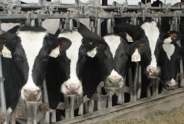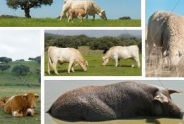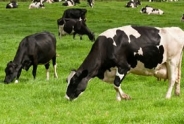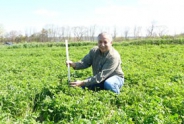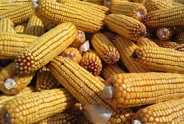Rate Your Record Keeping System by Mary Kate (Wheeler) MacKenzie
Have you ever heard the business adage: "You can't manage what you don't measure?" When it comes to the financial side of your farm business, good record keeping is the first step to measuring — and managing — business performance.
Good financial record keeping takes time, discipline, organization, and often teamwork. For some farms, it may also require investing in accounting software, or hiring a professional bookkeeper. In other words, you have to commit resources to this effort, and the commitment must be ongoing. However, with all of the day-to-day production activities demanding attention from the farm operator, it can be easy to lose track of that commitment.
If the benefits of good record keeping are not enough to convince you that the effort is worthwhile, then consider the costs of poor record keeping. In my experience, farms with inadequate financial record keeping systems face three major costs: wasted time, missed opportunities, and high stress. While it may be difficult to quantify these costs, they are very real. When you spend hours searching for a lost bill or receipt, incur service fees due to a missed payment, or overlook an opportunity to increase profits, both your financial bottom line and your mental health can suffer.
What makes a good record keeping system, and how do you know if you already have one or not? This short quiz can help you answer both of these questions. The five quiz questions encourage you to reflect on attributes of your current record keeping system. Keep track of your points to see how your system ranks, and what you can do to improve it, in the scoring section following the quiz.
Rate Your Record Keeping QuizOn my farm, records of individual income and expense transactions are:
- Regularly entered into an accounting system before going into organized storage (3 points)
- Organized, stored in a specific location, easy to find (2 points)
- Disorganized, stored in multiple locations, hard to find (1 point)
Which statement best describes the accounting system used to enter and track financial data on your farm?
- We regularly enter financial transactions into a digital accounting program — e.g. QuickBooks, CenterPoint, Quicken, etc. (4 points)
- We regularly enter financial transactions using a simple accounting tool — e.g. Cornell Farm Account Book, Excel spreadsheet, etc. (3 points)
- We use checking account statements as the primary record of financial transactions — e.g. the digital shoebox method (2 points)
- We collect paper receipts and hand them over to an off-farm accountant at the end of the year — e.g. the shoebox method (1 point)
Who is responsible for financial record keeping on your farm?
- One person is responsible, and that person sets clear expectations for other team members (3 points)
- Multiple people share responsibility, and their roles are not clearly defined (2 points)
- Nobody (1 point)
Which statement best describes the income tax situation on your farm?
- The farm completes income tax returns on a timely basis (3 points)
- We are still working on last year's taxes (2 points)
- Our farm is more than a year behind on filing income taxes (1 point)
Our farm generates and uses financial statements to analyze business performance:
- Regularly, on a monthly or quarterly basis (4 points)
- Regularly, on an annual basis (3 points)
- Only when our lender requires it (2 points)
- Not at all (1 point)
5 - 9 points: Poor
Your record keeping system is inadequate. It may be costly in terms of high stress, inefficient labor, and missed opportunities. Your farm desperately needs someone to make a commitment to take your system to the next level. To set up a basic system, you will need to identify who, what, when, where and how. Who will be responsible for organizing records and entering transactions? What categories will you track for revenues, expenses, and other transaction types? When will your designated bookkeeper complete their record keeping activities? Where will records be stored, whether in digital or print format? What accounting tool will you use to record transactions? If you are more than a year behind on your record keeping, you may consider using a simple accounting tool to catch up quickly, while putting a more sophisticated tool into place for future years.
10 - 14 points: Adequate
You have a basic record keeping system in place, which most likely satisfies the IRS and your banker, and helps with farm decision making. However, your system may not provide enough detail or accuracy to analyze your farm's financial performance. It is time to ramp up your record keeping game, and build a system that creates more value for your business. Do you have the in-house capacity to manage a sophisticated record keeping system? If so, invest in training for whoever on the farm is responsible for record keeping. Explore different accounting software packages, and discuss their pros and cons with your tax accountant and your lender. Select a record keeping software that works for you, one that is simple enough for your on-farm bookkeeper to learn and manage, yet sophisticated enough to analyze data and generate financial reports. If you do not have a person on the farm who can provide leadership for a record keeping transition, consider hiring an outside bookkeeper to enter transactions on a weekly or monthly basis.
15 - 17 points: Rock Solid
You have reliable numbers to support detailed financial analysis. You can plan and make management decisions with confidence. Once your record keeping system reaches this level, you can shift your focus from data tracking to analysis. At this point, you should have a strong foundation for whole farm budgeting and strategic business planning. Be sure to set clear financial goals and review your profitability on a regular basis, whether monthly, quarterly or annually. Consider benchmarking your financial performance against other farms in your industry to identify opportunities for improvement. The agricultural extension program in your state can help you locate benchmarking resources for your industry. Ultimately, your farm will benefit from your ability to evaluate financial impacts of possible changes, and plan for the future of your business. Depending on where you are in the lifecycle of your business, it may be time to start developing a farm succession plan.
Rate Your Record Keeping System (pdf; 190KB)
- Mary Kate (Wheeler) MacKenzie was recognized by the National Association of County Agricultural Agents (NACAA) with a na
Upcoming Events
Tioga County Pasture Walk
July 24, 2025
Owego, NY
Join Cornell Cooperative Extension of Tioga County, CCE South Central Dairy and Field Crops Team, and Tioga County Soil and Water Conservation District for a pasture walk!
This year, we will be visiting an organic dairy farm.
Cortland County Pasture Walk
July 28, 2025
Cortland, NY
Join Cornell Cooperative Extension of Cortland County, CCE South Central Dairy and Field Crops Team, and NE NatGLC for a twilight pasture walk at Ironwood Grazing Co with Mike Quinlin!
Farmer Mike will highlight his efforts at custom grazing cow/calf pairs and utilizing the herds grazing effect to improve land. You'll get to see mob grazing techniques to control knapweed and goldenrod, witness clipping versus grazing comparisons, see pasture residual and recovery rates, judge soil health & animal performance metrics and learn what tools (grazing chart, pasture infrastructure and resources) are being used on the farm. Throw in some impromptu demos, manure quality vetting, personal experiences from guests and ice-cream, and you have a meeting not to be missed.
Topics: Renovating pasture, leasing ground & custom grazing animals
Free to register; Registration optional, but encouraged!
Tompkins County Pasture Walk
August 14, 2025
Ithaca, NY
Topics:
- Watering systems & composting pad, Soil & Water Conservation District
- Grazing small ruminants, Jess Waltemyer, Cornell PRO-LIVESTOCK
Free to register; Registration optional, but encouraged!
Announcements
USDA Contract Freezes and Terminations: Legal Action Steps for Farmers
For Farmers with Signed EQIP and CSP ContractsThis resource is written for farmers and ranchers nationwide who have a signed contract with USDA NRCS under the EQIP or CSP program for environmental improvements but have concerns that their contract is frozen, under review, or terminated, and who are uncertain of their rights to receive reimbursement as well as their ongoing obligations under the signed contract.
Version: 1.0
Issue date: Feb 28, 2025
A downloadable factsheet is available at our BUSINESS tab on the top of our webpage.
Additional Information: www.farmcommons.org
USDA Contract Freezes: Filing an NAD Appeal or Demand Letter
This resource is written for farmers and ranchers nationwide who have a signed contract with USDA NRCS under the EQIP or CSP program for environmental improvements and want more information on the mechanics of filing a National Appeals Division (NAD) appeal. This resource includes sample letters.
USDA NAD Appeal https://www.usda.gov/about-usda/general-information/staff-offices/office-hearings-and-appeals/national-appeals-division/nad-appeals
Farm Participants Needed for Bale Grazing Grant!
Information on the Project:- Approximately 10 acres total needed to bale graze two different bale densities
- "Core" farms will graze two winters, "Demo" farms will graze one winter.
- Payments for both "Core" farms and "Demo" farms
- Baseline soil sampling by bale grazing team
- Forage measurements in early season by bale grazing team
- Late season clipping if residual not trampled down by farm
Cornell Cow Convos - New Podcast
On-going podcast, New episodes released on the last Thursday of the month.Guest speakers, CCE Dairy Specialists.
Housed on Soundcloud Channel is CCE Dairy Educators
- Preventative healthcare for cows
- The trend of beef on dairy
- What to look forward to in the new year for dairy
- Socially grouping or pair-housing calves
2018 Drug Residue Prevention Manual
For more than 30 years, the U.S. dairy industry has focused educational efforts on the judicious use of antibiotics through the annual publication of a Best Practices Manual. The 2018 edition of the National Dairy FARM Program: Farmers Assuring Responsible Management? Milk and Dairy Beef Drug Residue Prevention Manual is the primary educational tool for dairy farm managers throughout the country on the judicious and responsible use of antibiotics, including avoidance of drug residues in milk and meat.The manual is a quick resource to review those antibiotics approved for dairy animals and can also be used as an educational tool and resource for farm managers as they develop on-farm best management practices necessary to avoid milk and meat residues. Visit the Manual and Form Library to download copies of this important tool!
Follow us on Facebook
The team updates our facebook page frequently - follow us to be updated on our events, see some fun videos and get local area updates!facebook.com/SCNYDairyandFieldCropsTeam
NYSERDA Agriculture Energy Audit Program
NYSERDA offers energy audits to help eligible farms and on-farm producers identify ways to save energy and money on utility bills. Reports include recommendations for energy efficiency measures.For more information and the NYSERDA Agriculture Energy Audit Program Application click here

